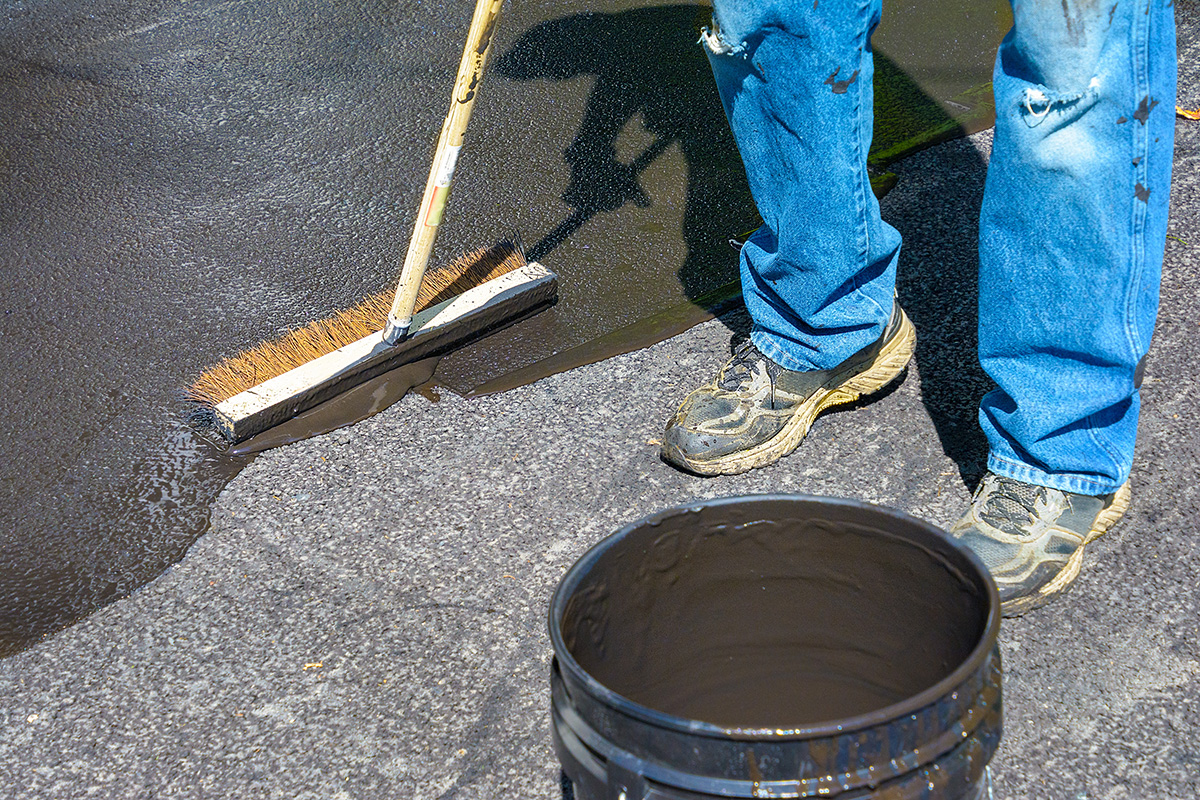Release the Possible: Regrading and Asphalt Sealing for Commercial Areas
Release the Possible: Regrading and Asphalt Sealing for Commercial Areas
Blog Article
Warm Mix Asphalt: A Lasting Solution for Pavement
Hot Mix Asphalt (HMA) has actually become a leading lasting option for sidewalk options, using a myriad of ecological benefits and cutting-edge modern technologies. Its capability to minimize and reuse products energy usage provides a compelling case for its adoption in roadway building jobs. Moreover, the long-lasting performance and toughness of HMA make it a preferred choice for facilities advancement. As the need for environment-friendly building and construction methods expands, discovering the nuances of HMA's sustainability can give valuable insights into the future of sidewalk options.
Ecological Benefits of Warm Mix Asphalt

Furthermore, Hot Mix Asphalt helps to reduce city heat island effects. Its dark shade soaks up sunshine, lowering the quantity of warm reflected back right into the atmosphere contrasted to lighter-colored sidewalks. This can decrease ambient temperatures in urban locations, decreasing the demand for air conditioning and eventually minimizing energy intake.
Additionally, Hot Mix Asphalt adds to boosted stormwater management. Its permeable nature enables water to infiltrate the sidewalk and recharge groundwater supplies, lowering runoff and the threat of flooding. These environmental advantages make Warm Mix Asphalt a sustainable choice for paving roadways and freeways.
Energy Efficiency in HMA Manufacturing
Is power performance an important element in the manufacturing of Hot Mix Asphalt (HMA)? Definitely. Energy plays a considerable role in the manufacturing of HMA, influencing both price and ecological sustainability. One key element of energy performance in HMA production is using warm mix asphalt (WMA) modern technologies (angled parking). WMA enables the blending and placement of asphalt at reduced temperatures compared to conventional hot mix asphalt, resulting in decreased power intake during production. This process not only reduces fuel use but also decreases greenhouse gas exhausts, making it an extra environmentally friendly option.
Additionally, developments in plant technologies have led to even more energy-efficient HMA production processes. By optimizing energy usage in HMA manufacturing, the industry can minimize its carbon impact while keeping high-quality pavement products.
Recyclability of Hot Mix Asphalt
The recyclability of Warm Mix Asphalt (HMA) is a crucial facet of its sustainability and long-lasting ecological impact. HMA is just one of one of the most recycled products in the USA, with over 100 million lots of reclaimed asphalt sidewalk (RAP) being recycled yearly in brand-new pavement building and construction. Recycling HMA uses a number of ecological advantages, such as minimizing the demand for virgin materials, lowering energy usage throughout production, and lowering the quantity of waste sent out to land fills.
The procedure of reusing HMA entails crushing the existing pavement, crushing it into smaller items, and mixing it with brand-new aggregate and asphalt binder to create a recycled mix. This recycled mix can commonly do in addition to or perhaps better than conventional HMA, while needing less resources and creating reduced greenhouse Bonuses gas exhausts. By incorporating RAP right into new pavement projects, roadway firms can save natural resources, lower expenses, and reduce the environmental footprint of roadway construction and upkeep activities. In general, the recyclability of HMA plays a considerable duty in advertising sustainable practices within the sidewalk market.

Long-Term Efficiency of HMA
Asphalt pavements show longevity and resilience over an extensive duration, mirroring the long-term performance of Warm Mix Asphalt (HMA) Furthermore, developments in HMA innovation, such as the use of polymer-modified binders and cozy mix asphalt, have even more enhanced the longevity and long life of HMA sidewalks. By prioritizing quality building and construction and maintenance methods, HMA continues to prove itself as a cost-effective and lasting solution for durable pavement infrastructure.
HMA: Resilience and Sustainability
Demonstrating both durability and sustainability, Hot Mix Asphalt (HMA) has come to be a cornerstone in the construction of durable sidewalk infrastructures - commercial parking lot paving. HMA's sturdiness originates from its capability to stand up to heavy tons, harsh climate condition, and high web traffic quantities, making it a reliable selection for highways, highways, and flight terminal runways. The make-up of HMA, which commonly includes accumulations, binder, and filler, plays a crucial role in improving its durability and resistance to tear and use
Furthermore, HMA's sustainability hinges on its recyclability and energy-efficient manufacturing process. The capability to reuse redeemed asphalt pavement (RAP) in new HMA blends lowers the demand for virgin materials and lessens the environmental influence of pavement construction and upkeep. Furthermore, the power efficiency of producing HMA hinges on its lower mixing temperature levels contrasted to various other pavement materials, leading to decreased energy consumption and greenhouse gas emissions.
Final Thought
Finally, warm mix asphalt (HMA) offers a sustainable remedy for sidewalk with its ecologically pleasant characteristics. HMA's recyclability, energy performance in production, and long-term durability make it an environmentally friendly choice for road building and construction. By conserving natural deposits, reducing waste, and lowering greenhouse gas exhausts, HMA plays a critical function in promoting sustainability in facilities advancement. Its capability This Site to minimize metropolitan warm island results better underscores its relevance in developing durable and ecologically conscious sidewalk systems.
HMA is one of the most recycled products in the United States, with over 100 million loads of recovered asphalt pavement (RAP) being recycled annually in brand-new sidewalk building.The procedure of recycling HMA involves milling the existing pavement, squashing it right into smaller sized items, and mixing it with new accumulation and asphalt binder to create a recycled mix.Asphalt pavements demonstrate resilience and durability over an extensive period, wikipedia reference showing the long-term efficiency of Hot Mix Asphalt (HMA) Furthermore, advancements in HMA modern technology, such as the usage of polymer-modified binders and warm mix asphalt, have actually additionally enhanced the sturdiness and longevity of HMA sidewalks. The capacity to recycle reclaimed asphalt sidewalk (RAP) in brand-new HMA blends minimizes the need for virgin products and decreases the ecological effect of sidewalk building and construction and upkeep.
Report this page